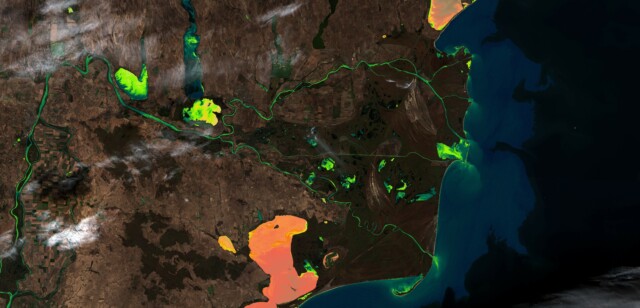Advancing Disaster Risk Management: Insights from Bucharest’s Workshop and Galileo’s EWSS

Stakeholders from public authorities, research institutions, civil society, and the private sector convened on 26 November 2024 at the invitation of its Rector, Mr. Mihnea Costoiu, at the Politehnica University of Bucharest to understand how satellite technologies can address disaster risk management challenges.
Part of a series of national workshops initiated by the European Union Agency for the Space Programme EUSPA and supported by Eurisy to raise awareness on the many possibilities offered by the EU space Programme for disaster risk management, the event highlighted the potential of satellite applications in enhancing Romania’s response and risk reduction capacities amid rising risks from floods, wildfires, and earthquakes. Aligned with Romania’s National Strategy for Disaster Risk Reduction 2023-2035, the workshop supported both increased national resilience and the growth of Romania’s space technology ecosystem.
Romania faces a range of significant disaster threats stemming from its geographic location and the impacts of climate change. Between 2000 and 2023, the EM-DAT database recorded 82 disasters in Romania, with floods being the most frequent, alongside the persistent risk of earthquakes. Most recently, in September 2024, Romania was heavily affected by severe flooding caused by unusually heavy rainfall across Central and Eastern Europe, resulting in the tragic loss of four lives. During this period, the Copernicus Emergency Management Service (CEMS) Rapid Mapping component was activated to provide detailed maps of the flooded areas, supporting local response efforts.

The workshop included the opportunity to see a live demonstration of the upcoming Galileo Emergency Warning Satellite Service (EWSS) demonstrating its ability to precisely disseminate messages directly to populations in areas threatened by natural or manmade disasters. Using the European Union’s Galileo satellite navigation system, this service will transmit safety information directly to smartphones and navigation devices, even when other terrestrially based alert systems are unavailable. By ensuring the distribution of alert messages and guidance, the EWSS will enhance critical emergency communications, safeguarding populations at threat.
VIDEO of the 1st Galileo Emergency Warning Satellite System (EWSS) pilot demonstration in a public set-up.
More generally, the workshop presented a range of satellite-enabled capabilities relevant to disaster management, including many provided by Romanian organisations, providing stakeholders with insights into how space technologies can be integrated across all disaster management phases.
Mr. Mihnea Costoiu, Rector of the National University of Science and Technology Politehnica Bucharest said: “Recently, we have faced numerous challenges, but this workshop is an opportunity to focus on creating solutions that truly help people”.
Rodrigo da Costa, Executive Director of EUSPA, noted that: ‘By harnessing satellite technology and fostering collaboration among stakeholders, the EU continues to advance its commitment to ensuring the safety and security of its citizens across the Union’.
Dominique Tilmans, Eurisy President, commented that: “space technologies are no longer just the domain of engineers and technicians: today, through applications, anyone can use the data obtained from space solutions.”

